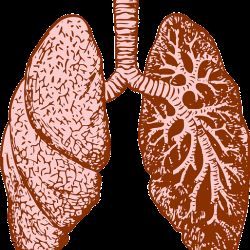Shortness of breath, also known as dyspnea, is a patient’s subjective experience. For a long time, we thought that observable measurements, like the degree to which our blood was oxygenated, was consistent with that subjective experience. COVID-19 requires us to rethink those associations.
Signs and symptoms
Symptoms are subjective, they are experienced by the patient who reports this to the physician, but it is nothing the physician can readily identify. Signs, on the other hand, are objective findings, events that all can see, and are clinically associated with those subjective symptoms. Being “air-hungry,” shortness of breath, the personal experience of what physicians term dyspnea, is often accompanied by signs such as an increased rate of breathing, or the straining of the neck and chest muscles associated with inhalation.
“A vast majority of COVID pneumonia patients I met had remarkably low oxygen saturations at triage—seemingly incompatible with life—but they were using their cellphones…they had relatively minimal apparent distress, despite dangerously low oxygen levels.”
Some COVID-19 patients present with physical signs of hypoxia, inadequate oxygenation, but experience no associated discomfort, no dyspnea – a condition popularized as “happy hypoxia.” What could cause the disconnect? A new paper explores the possibilities.
Respiratory physiology
- CO2 is our gaseous waste product, and even a little excess in our blood, the PaCO2, causes our respiratory centers to increase our respiratory rate to “blow-off” the excess. An elevated level, termed hypercapnia, makes us feel respiratory discomfort, dyspnea
- Hypoxia, a decrease in life-giving oxygen, also causes dyspnea but takes a more circuitous route. First, provoking a response within our carotid artery, the carotid body, an area where the carotid separates into the external carotid providing blood to the face and the internal carotid, giving blood to the brain. The carotid body sends signals to the brain, specifically the medulla oblongata, that again increases the depth and rate of our respirations while sending messages to other pathways to produce the sense of dyspnea
- The two responses are intertwined, and hypoxia’s signals only get heard in the presence of similar signals of hypercapnia.
What can alter these basic physiologic responses?
The researchers point to two reasons. First, there is a wide range for these physiologic triggers with a 3 to 6-fold variation among individuals. Second, and perhaps more to the point in the COVID-19 population is that both age and diabetes result in a blunting of the neurologic response to these triggers, it is a form of neuropathy. In patients with diabetes, both the objective and subjective response to hypoxia can be blunted. The researchers also suggest that the direct effect of COVID-19 on the ACE2 receptors found in the carotid body or the presence of the virus in our nasal passages, especially the nasal bulb, can result in access to our central respiratory centers and may also be at play. Still, that role has yet to be established.
Several other factors may further complicate the picture of determining the oxygen levels. Fever shifts the strength of attachment of oxygen to hemoglobin, unloading oxygen, making the available oxygen appear to be less than actually present. Oxygenation is easily estimated by pulse oximetry, those little devices that are attached to your fingertips. [1] Turns out that the accuracy of these devices declines when oxygenation saturation is less than about 80%, values found in the critically ill. Pulse oximetry is also less accurate in dark skin patients. In most instances, a pulse oximeter reading in the low 80’s is cause for significant concern, so while this statement by the researchers is correct, a few points difference in either direction does not prevent a physician from acting.
While physician concern is warranted, the degree of concern may be overstated. As the researchers point out,
“Tourists on drives to the top of Mount Evans near Denver experience oxygen saturations of 65% for prolonged periods; many are comfortable while some sense dyspnea.”
What constitutes hypoxia is not strictly defined; it is more a case of “I know it when I see it.” But for the researchers, in speaking with frontline clinicians, it seems that hypoxia is defined more by the “need” for oxygen. And that the presence of hypoxia is markedly different when measured by pulse oximetry, a patient’s experience of dyspnea, or the physician’s degree of concern for the patient in front of them. It may well be that the “Happy hypoxia” of COVID-19 is more an artifact of how we measure and think than some underlying alteration in how we understand respiratory physiology.
[1] Pulse oximeters measure the absorption of light as it passes through oxygenated and unoxygenated blood.
Source: Why COVID-19 Silent Hypoxemia is Baffling to Physicians American Journal of Respiratory and Critical Care Medicine DOI: 10.1164/rccm.202006-2157CP

